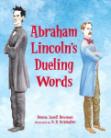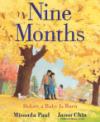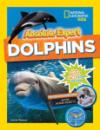
Hello STEM Tuesday Readers! I am delighted to welcome Carrie Launius to the STEM Tuesday blog. Carrie is one of the teachers that is spearheading the brand new Linking Literacy Event at the National NSTA event this year in St. Louis, MO. This is a brand new event offered at the National Science Teacher Association conference that allows teachers and trade authors to mix, mingle, and learn from each other.

I thought it might be fun to ask Carrie a few questions about how the Linking Literacy event was designed.
Hi Carrie. Thanks for joining us. What gave you the idea to create the Linking Literacy event at NSTA?
I have been in education for a long time as a classroom teacher, science coordinator, and an assistant superintendent of curriculum and instruction. I have been in districts that are very successful and other districts that struggle. Having this background and having the opportunity to work closely with E. Wendy Saul, Ph.D., truly to “guru” of literacy and science, I believe the integration of literacy is valuable in all content areas. We often hear teachers say math and science go together while ELA and social studies go together. I think all contents support each other. We do not live our lives in silos nor do students live in them. I have had enormous success, especially with lower socio-economic students enriching science using high-quality trade books. With Dr. Christine Royce president of NSTA (Christine is a huge proponent of literacy integration and writes a monthly column “Teaching with Tradebooks” for NSTA), I approached her and asked if I could try to bring authors to the conference to talk about their books and how science trade books enhance science instruction. She 100 % supported the idea. She not only supported me, she worked closely with me to make the event happen.
Why is using trade children’s books about STEAM/STEM a great way to do this?
Margaret Anastas says, ” A good picture book tells a compelling story.” Using high-quality trade books opens the world of possibilities. Today, we are teaching students for careers that have not even been thought of, so why not allow them the opportunity to use both convergent and divergent thinking and the opportunity to wonder, hope and dream? Where else besides a book can one really understand the thinking stance of a character? Television and movies don’t do this. Students use so many skills while reading nonfiction books way beyond learning to read. Good nonfiction trade books push readers to think in a new way, to imagine what they have never been able to before and helps them make sense of the crazy world around them.
You are also the one who helped to create the NSTA’s Best STEM book award. What was the drive to do that? How is it different from the Outstanding Trade Science Book Award that NSTA gives?
At one time I was working with Dr. Saul and writing for a non-profit, Springboard to Learning. My task was to create a STEM-based curriculum. As I always do with any writing, I look for books to enhance the curriculum. I tried to find books that were STEM-like. What I quickly found was that people called books “STEM Books” but I could see no rhyme or reason to why. Descriptions of books would say, “Great STEM Book!” So I decided to do research to find out just what that meant, I quickly found out it meant nothing. So I called the editor of NSTA, at that time, David Beacom and said, “You really need to have a Best STEM book Award. What you are calling STEM is not STEM!” He took me up on the idea and told me to start researching. I reached out to three colleagues – all amazing educator and fellow book enthusiasts, Wendy Saul, Christine Royce, and Juliana Texley. We spent many hours thinking about what exactly was a STEM book. Christine came up with the idea to look at what is NOT a STEM book. Wendy coined the phrase, “Inviting readers to examine someone’s thinking stance.” Juliana was NSTA president at that time. She pulled together other groups to look at what I wrote, then shared with my “posse” then with the group. We came up with clear criteria and we started the award.
OSTB and BSB are very different. Content, content, content, is what makes an OSTB book great. Thinking is what makes a BSB great. Identifying a STEM book is much more subtle. While the criteria for OSTB is very black and white, BSB is truly gray. BSB does not have to be nonfiction, it does not have to have perfect pictures but it does need to show innovation, inventing, creating or change.
Do you see Linking Literacy events at future NSTA Events?
It is my hope that Linking Literacy will become a part of NSTA Conferences. I hope every author takes a Sharpie and saves the dates April 2 -5, 2020, Boston. Linking Literacy is to support teachers, but more importantly to support kids. I have already asked (begged) Wendy, Christine, and Juliana to consider staying on this journey with me and working to create more experiences by growing the event in Boston and beyond.
Anything else you want to add?
I would be remiss if I did not tell you how amazing and supportive NSTA staff has been in making this happen. They have allowed us to bend the rules just to make a difference for teachers. Delores, Dayna, Jason, Kim and Kim- thanks for all you do!
If you haven’t considered going to the NSTA event, you should! It’s going to be EPIC. Click Here for information about the National Science Teacher Association conference and how to register for it.
Besides, if you decide to go, you will be able to meet a few of the STEM Tuesday bloggers who are featured authors there:
Heather Montgomery, Jodi Wheeler-Toppen, Patricia Newman, Carolyn DeCristofano, Mary Kay Carson, and me (Jennifer Swanson)
********************************************************************
And now, the winners of the STEM Tuesday Search Party Contest…. (drum roll please….)
STEM TUESDAY SEARCH PARTY PRIZE WINNERS!
(A HUGE “Thank You” to all who entered and deep gratitude to the wonderful STEM authors who donated books!)
 Amy M. O’Quinn (Winner – Nancy Furstinger)
Amy M. O’Quinn (Winner – Nancy Furstinger)
 MARIE CURIE FOR KIDS
MARIE CURIE FOR KIDS
 Sarah Albee (Winner – Anitha Kuppuswamy)
Sarah Albee (Winner – Anitha Kuppuswamy)
 POISON: DEADLY DEEDS, PERILOUS PROFESSIONS, AND MURDEROUS MEDICINES
POISON: DEADLY DEEDS, PERILOUS PROFESSIONS, AND MURDEROUS MEDICINES
 Natascha Biebow (Winner – Summer Tobald)
Natascha Biebow (Winner – Summer Tobald)
 THE CRAYON MAN: THE TRUE STORY OF THE INVENTION OF THE CRAYOLA CRAYON
THE CRAYON MAN: THE TRUE STORY OF THE INVENTION OF THE CRAYOLA CRAYON
 Nikole Brooks Bethea (Winner – Eric)
Nikole Brooks Bethea (Winner – Eric)
SUPER SCIENCE FEATS (4-book Series from Pogo Books published by Jump!)
THE FIRST FLIGHT, THE MOON LANDING, THE INTERNET, CELL PHONES




 Donna Janell Bowman (Winner – Suzanne Larsen)
Donna Janell Bowman (Winner – Suzanne Larsen)
 STEP RIGHT UP: HOW DOC AND JIM KEY TAUGHT THE WORLD ABOUT KINDNESS, illustrated by Daniel Minter (Lee and Low, 2016)
STEP RIGHT UP: HOW DOC AND JIM KEY TAUGHT THE WORLD ABOUT KINDNESS, illustrated by Daniel Minter (Lee and Low, 2016)
 ABRAHAM LINCOLN’S DUELING WORDS, illustrated by S.D. Schindler (Peachtree, 2018)
ABRAHAM LINCOLN’S DUELING WORDS, illustrated by S.D. Schindler (Peachtree, 2018)
 Susan M Latta (Winner – Beth)
Susan M Latta (Winner – Beth)
 BOLD WOMEN OF MEDICINE: 21 STORIES OF ASTOUNDING DISCOVERIES, DARING SURGERIES, AND HEALING BREAKTHROUGHS.
BOLD WOMEN OF MEDICINE: 21 STORIES OF ASTOUNDING DISCOVERIES, DARING SURGERIES, AND HEALING BREAKTHROUGHS.
 Janet Slingerland(Winner – Joan Swanson)
Janet Slingerland(Winner – Joan Swanson)
 EXPLORE ATOMS AND MOLECULES! With 25 Great Projects
EXPLORE ATOMS AND MOLECULES! With 25 Great Projects
 Miranda Paul (Winner – Rani)
Miranda Paul (Winner – Rani)
Donating TWO prize packages:
Book Set #1 (plus a set of water stickers and a set of new baby stickers!)

 WATER IS WATER
WATER IS WATER
NINE MONTHS (Advance F&G copy only)

Book set #2 (plus a few bookmarks!)


I AM FARMER: GROWING AN ENVIRONMENTAL MOVEMENT IN CAMEROON
ONE PLASTIC BAG: ISATOU CEESAY AND THE RECYCLING WOMEN OF THE GAMBIA
 Kate Narita (Winner – Heather Macchi)
Kate Narita (Winner – Heather Macchi)
 100 BUGS!
100 BUGS!
 Laurie Wallmark (Winner – T Dionne)
Laurie Wallmark (Winner – T Dionne)
(Author of Hedy Lamarr’s Double Life, Grace Hopper: Queen of Computer Code, and Ada Byron Lovelace and the Thinking Machine)
- A classroom prize pack of:
* bookmarks
* stickers
* STEM-related word searches
* pencils
 Dianne White (Winner – Rebecca Smith)
Dianne White (Winner – Rebecca Smith)
 WHO EATS ORANGE?, illustrated by Robin Page (Beach Lane/S&S, 2018)
WHO EATS ORANGE?, illustrated by Robin Page (Beach Lane/S&S, 2018)
(The STEM TUESDAY Mary Kay & Jen Bundle Winner – Mandy Davis)
 Mary Kay Carson
Mary Kay Carson
 MISSION TO PLUTO
MISSION TO PLUTO
 Jennifer Swanson
Jennifer Swanson
A 3-pack of:



ASTRONAUT-AQUANAUT
ABSOLUTE EXPERT: DOLPHINS
ZOOLOGY: COOL WOMEN WHO WORK WITH ANIMALS
Like this:
Like Loading...







 The Poetry of Science: The Poetry Friday Anthology for Science compiled by Sylvia Vardell and Janet Wong
The Poetry of Science: The Poetry Friday Anthology for Science compiled by Sylvia Vardell and Janet Wong



 Nancy Castaldo has written books about our planet for over 20 years including, THE STORY OF SEEDS: From Mendel’s Garden to Your Plate, and How There’s More of Less To Eat Around The World, which earned the Green Earth Book Award, Junior Library Guild Selection, and other honors. Nancy’s research has taken her all over the world from the Galapagos to Russia. She strives to inform, inspire, and educate her readers. Nancy also serves as the Regional Advisor of the Eastern NY SCBWI region. Her 2018 multi-starred title is BACK FROM THE BRINK: Saving Animals from Extinction. Visit her at www.nancycastaldo.com
Nancy Castaldo has written books about our planet for over 20 years including, THE STORY OF SEEDS: From Mendel’s Garden to Your Plate, and How There’s More of Less To Eat Around The World, which earned the Green Earth Book Award, Junior Library Guild Selection, and other honors. Nancy’s research has taken her all over the world from the Galapagos to Russia. She strives to inform, inspire, and educate her readers. Nancy also serves as the Regional Advisor of the Eastern NY SCBWI region. Her 2018 multi-starred title is BACK FROM THE BRINK: Saving Animals from Extinction. Visit her at www.nancycastaldo.com Patricia Newman writes middle-grade nonfiction that inspires kids to seek connections between science, literacy, and the environment. The recipient of a Sibert Honor for Sea Otter Heroes and the Green Earth Book Award for Plastic, Ahoy!, her books have received starred reviews, been honored as Junior Library Guild Selections, and included on Bank Street College’s Best Books lists. New: Eavesdropping on Elephants: How Listening Helps Conservation, an NSTA Outstanding Science Trade Book. During author visits, she demonstrates how her writing skills give a voice to our beleaguered environment. Visit her at www.patriciamnewman.com.
Patricia Newman writes middle-grade nonfiction that inspires kids to seek connections between science, literacy, and the environment. The recipient of a Sibert Honor for Sea Otter Heroes and the Green Earth Book Award for Plastic, Ahoy!, her books have received starred reviews, been honored as Junior Library Guild Selections, and included on Bank Street College’s Best Books lists. New: Eavesdropping on Elephants: How Listening Helps Conservation, an NSTA Outstanding Science Trade Book. During author visits, she demonstrates how her writing skills give a voice to our beleaguered environment. Visit her at www.patriciamnewman.com.

 Amy M. O’Quinn
Amy M. O’Quinn

 Natascha Biebow
Natascha Biebow 
 Nikole Brooks Bethea
Nikole Brooks Bethea





 Susan M Latta
Susan M Latta 
 Janet Slingerland
Janet Slingerland
 Miranda Paul
Miranda Paul 




 Kate Narita
Kate Narita 
 Laurie Wallmark
Laurie Wallmark 
 Mary Kay Carson
Mary Kay Carson MISSION TO PLUTO
MISSION TO PLUTO Jennifer Swanson
Jennifer Swanson


 Welcome to STEM Tuesday: Author Interview & Book Giveaway, a repeating feature for the fourth Tuesday of every month. Go Science-Tech-Engineering-Math!
Welcome to STEM Tuesday: Author Interview & Book Giveaway, a repeating feature for the fourth Tuesday of every month. Go Science-Tech-Engineering-Math!

 Your host is
Your host is